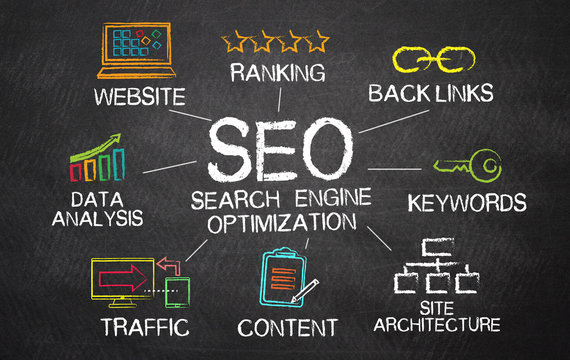Common digital marketing mistakes(and How to Avoid Them)
Table of Contents

Digital marketing is the lifeblood of today’s businesses, providing brands with the chance to reach their audience with unparalleled accuracy and scope. But opportunity comes with increased complexity. The digital environment is constantly in flux—and in the midst of rapid change, it’s easy to get caught up in habitual pitfalls that can undermine your brand’s performance.
Whether you are a business owner, marketing manager, or startup founder, sidestepping these mistakes can save you time, budget, and reputation.
This comprehensive guide delves into the most frequent digital marketing errors companies commit—and more importantly, how to steer clear of them through actionable approaches.
1. Failing to Build the Base: Lack of Definite Digital Marketing Strategy
The Mistake:
Most companies jump into digital marketing without a plan. They place some ads, tweet, send a newsletter—and hope for the best. This is a reactive strategy that results in inconsistency and confusion.
How to Avoid It:
- Set SMART goals: Specific, Measurable, Achievable, Relevant, Time-bound.
- Chart your customer journey: From awareness through conversion to loyalty.
- Select the right channels based on where your audience spends their time.
- Construct a marketing calendar to ensure consistency.
Tip: Each campaign must connect back to your overall business objective. If not, it’s noise.
2. Not Knowing Your Audience
The Mistake:
Producing content or advertising without fully understanding your audience results in low engagement, high bounce rates, and a budget wasted.
How to Avoid It:
- Develop detailed buyer personas: Add demographics, interests, pain points, and purchasing behaviors.
- Segment your audience by behavior or intent.
- Utilize analytics tools to look for traffic patterns, time on site, and engagement.
- Take frequent surveys or interviews in order to get feedback directly from customers.
The more you understand about your audience, the less you will have to guess.
3. Underestimating the Power of SEO
The Mistake:
Ignoring SEO is similar to constructing a wonderful shop in the desert. Without search engine visibility, your site is essentially non-existent.
How to Avoid It:
- Concentrate on on-page as well as off-page SEO.
- Optimize meta titles, descriptions, header tags, and URLs.
- Implement internal linking to navigate users as well as search engines through your website.
- Prioritize long-form, high-quality content that addresses user issues.
- Stay updated with search engine algorithm changes.
SEO isn’t a one-time task; it’s an ongoing commitment to relevance and user experience.
4. Focusing Only on Paid Ads
The Mistake:
Many brands rely solely on paid ads for traffic and conversions. While PPC can deliver instant results, it’s not a sustainable long-term strategy without organic efforts.
How to Avoid It:
- Leverage your online efforts with content marketing, SEO, and email marketing.
- Employ paid advertising to test, then scale success organically.
- Vary ad channels—don’t rely on a single platform.
- Target retargeting and lookalike audiences to boost ROI.
Ads shouldn’t be the savior your business leans on—instead, they should supplement what’s already succeeding.
5. Posting Aimlessly on Social Media
The Mistake:
Incoherent or off-topic social media postings confuse your audience and dilute your brand identity.
How to Avoid It:
- Create a content plan that serves your objectives and audience requirements.
- Adhere to the 80/20 rule: 80% value, 20% promotion.
- Monitor performance metrics for optimizing content types (reels, carousels, stories).
- Employ consistent branding, tone, and messaging.
Social media is not a megaphone—it’s a conversation. Make it two-way.
6. Mobile Optimization Ignorance
The Error:
If your website or email campaigns are not mobile-accessible, you’re probably missing out on half your potential base.
How to Prevent It:
- Employ responsive design for your site.
- Optimize page load speed, buttons, and image loading on mobile devices.
- Preview mobile layouts prior to publishing.
- Refrain from big blocks of text; break up content into scannable chunks.
Mobile-first isn’t a trend. It’s normal.
7. Not Monitoring or Measuring Performance
The Mistake:
You can’t improve what you don’t measure. Lots of campaigns fail just because there’s no monitoring of performance.
How to Avoid It:
- Utilize tools such as Google Analytics, UTM tags, and conversion tracking.
- Define obvious KPIs for each channel: clicks, conversions, bounce rates, etc.
- Perform monthly audits to monitor trends and optimize strategy.
- Develop a custom dashboard to easily visualize performance.
Without data, marketing is blind driving.
8. Ignoring Email Marketing
The Error:
Email is considered outdated or not effective by some marketers. Consequently, they ignore it altogether.
How to Steer Clear Of It:
- Leverage email as a relationship-building tool, rather than promotional means only.
- Develop automated nurture streams for leads.
- Split your list by behavior or interest.
- Send personalized, value-driven content.
Email delivers one of the highest ROIs in digital marketing—if used right.
9. Not Using Retargeting Campaigns
The Mistake:
Most visitors don’t convert on their first visit. Without retargeting, you’re leaving money on the table.
How to Avoid It:
- Run retargeting ads on Google, Facebook, Instagram, and LinkedIn.
- Customize ads based on user behavior (e.g., viewed a product, visited pricing page).
- Retarget with email retargeting if a user is in your database.
- Make retargeting ad creative fresh to prevent fatigue.
Retargeting is similar to following up on a first meeting. It’s successful because it creates familiarity.
10. Creating Content Without Purpose
The Mistake:
Posting content solely to “stay active” with no strategy tends to fail with poor engagement and little ROI.
How to Avoid It:
- Every piece of content must have a definitive objective: teach, convert, inform, or retain.
- Tie subjects to your audience’s pain points or questions.
- Repurpose content into various formats (blog > video > carousel).
- Cross-promote each piece through channels to maximize visibility.
Purpose-based content establishes credibility, generates traffic, and facilitates conversions.
11. Not A/B Testing Campaigns
The Mistake:
Testing variations before running a campaign ensures you don’t just accept mediocre outcomes without even knowing it.
How to Prevent It:
- Test a single variable at a time (headline, CTA, image).
- Leverage platforms’ native A/B tools (Google Ads, Meta Ads, email marketing platforms).
- Test with statistically significant traffic to get accurate results.
- Log winning variations for easy reference later.
Ongoing testing brings about ongoing improvement.
12. Overlooking Website UX and Loading Speed
The Error:
Having excellent content or not, a slow or clunky site will have users bouncing—rapidly.
How to Prevent It:
- Optimize images, enable caching, and optimize your hosting.
- Make navigation intuitive and CTAs clear.
- Limit unnecessary pop-ups and distractions.
- Test on multiple devices and browsers.
Slow site = lost sales. Each second matters.
13. Over-Dependence on Trends
The Error:
Bothering to jump on every trend will attract some short-term notice but fails to create a sustainable brand.
Avoid It:
- Select trends that speak to your brand values and consumers.
- Include your own spin rather than imitation.
- Be authentic. It sounds more real than forced application.
Don’t pursue virality. Create value instead.
14. Failing to Invest in Creative and Design
The Mistake:
Weak visuals, uninspired creatives, or poor branding may render even superior content ineffective.
How to Avoid It:
- Utilize professional design software or hire professionals.
- Establish a brand style guide for font, color, and tone.
- Apply storytelling in visuals—don’t design, communicate.
- Have creatives optimized per platform.
Great design is not only pretty—it performs.
15. Failure to Nurture Leads Post-Conversion
The Mistake:
Most brands terminate their marketing when a lead converts or becomes a customer. That’s a massive missed opportunity.
How to Avoid It:
- Create post-purchase sequences for onboarding and upselling.
- Provide exclusive content or loyalty rewards.
- Request feedback and reviews to gain credibility.
- Remind your brand of being top-of-mind with regular, useful communication.
The purpose is not merely conversion—it’s customer lifetime value.
Final Thoughts
Digital marketing is an incredibly potent growth machine—only if done correctly. The errors mentioned here are unexpectedly prevalent in industries, sizes, and levels of experience. Awareness comes first, then action.
Whether scaling up or starting out, keep in mind:
- Plan strategically
- Know your audience
- Consistency pays
- Always analyze and optimize
Small incremental improvements add up over time, building a profound competitive advantage in your niche.


